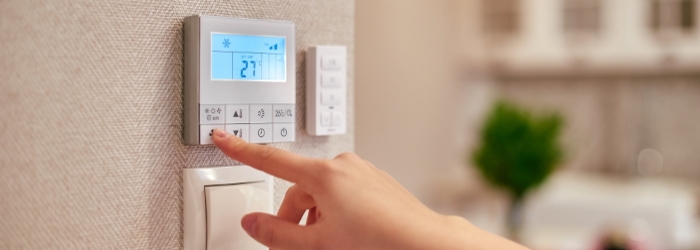Heating a building means compensating for the heat losses resulting from the difference between the outside temperature and the desired comfortable and as stable as possible room temperature.
In hot-water central heating systems, heating elements (radiators, convectors, underfloor heating, etc.) are used to heat the building.
Water flows through these bodies and is heated to a certain temperature by a heat generator (oil or gas boilers). The entire heating system is calculated to guarantee a temperature of e.g. 20 °C in the living room when the outside temperature is -10 °C.
Over-dimensioning of installations
The systems are designed to cope with very low outdoor temperatures, down to -15°C, however the minimum outdoor temperature is rarely reached (a few days per year at the most). During the majority of the heating period – which can be estimated at 270 days or 6500 hours per year – the installation is oversized.
This oversizing is all the more important as:
the insulation of the building has been reinforced (double glazing, roof insulation, etc.)
some heating units are only used occasionally (laundry room, garage, veranda, workshop)
Free heat is not considered (open fire, wood stove, spot lighting, household appliances).
It is therefore necessary to limit the heating capacity of the installation to avoid overheating. This can be done in different ways:
Either the heat generator or the circulator can be switched on/off according to the room temperature measured in a control room by a room thermostat.
Either the heat generator is switched on/off or a motorised mixing valve is opened/closed depending on the outside temperature and the temperature of the water circulating in the system.
This second method has the great advantage that too hot water is not fed into the pipes, which leads to increased losses but also causes discomfort. For this reason, the installation must be equipped with an automatic regulation that adapts the flow to the radiators according to the outside temperature.
On the same day, the following variations may occur:
Temperature curve
06h00: 0 °C
10:00 a.m.: +5 °C
12:00 noon: +12 °C
17:00: +9 °C
22:00: +2 °C
As mentioned just above, variations of 7 to 8°C in two hours are not uncommon. Due to the inertia of a heating system, it is impossible under such conditions for the ambient temperature to remain stable, if the outside temperature is not measured and if the generator is switched on/off only when the ambient temperature changes.
The controller with an outdoor sensor is the only system that keeps the room temperature stable, even in case of sudden changes in the outdoor temperature.

Comments are closed